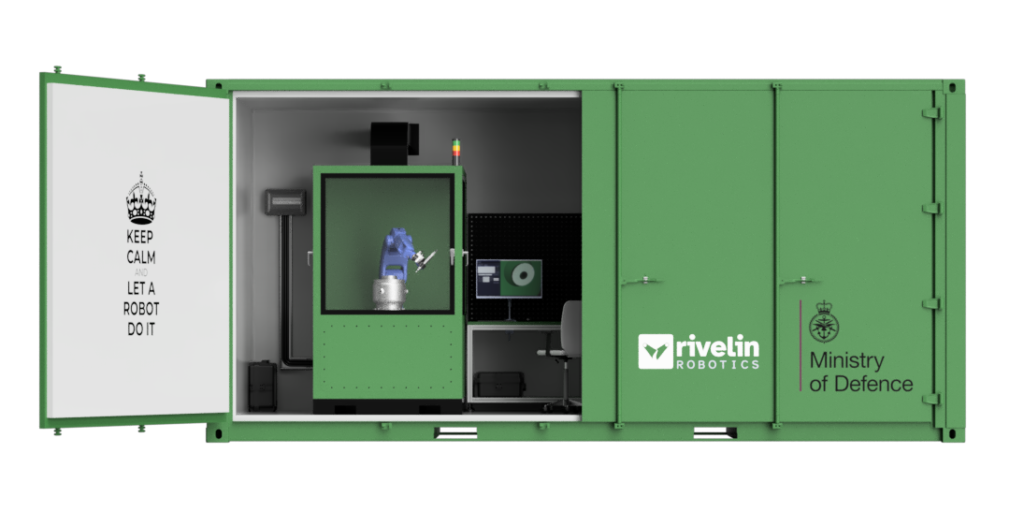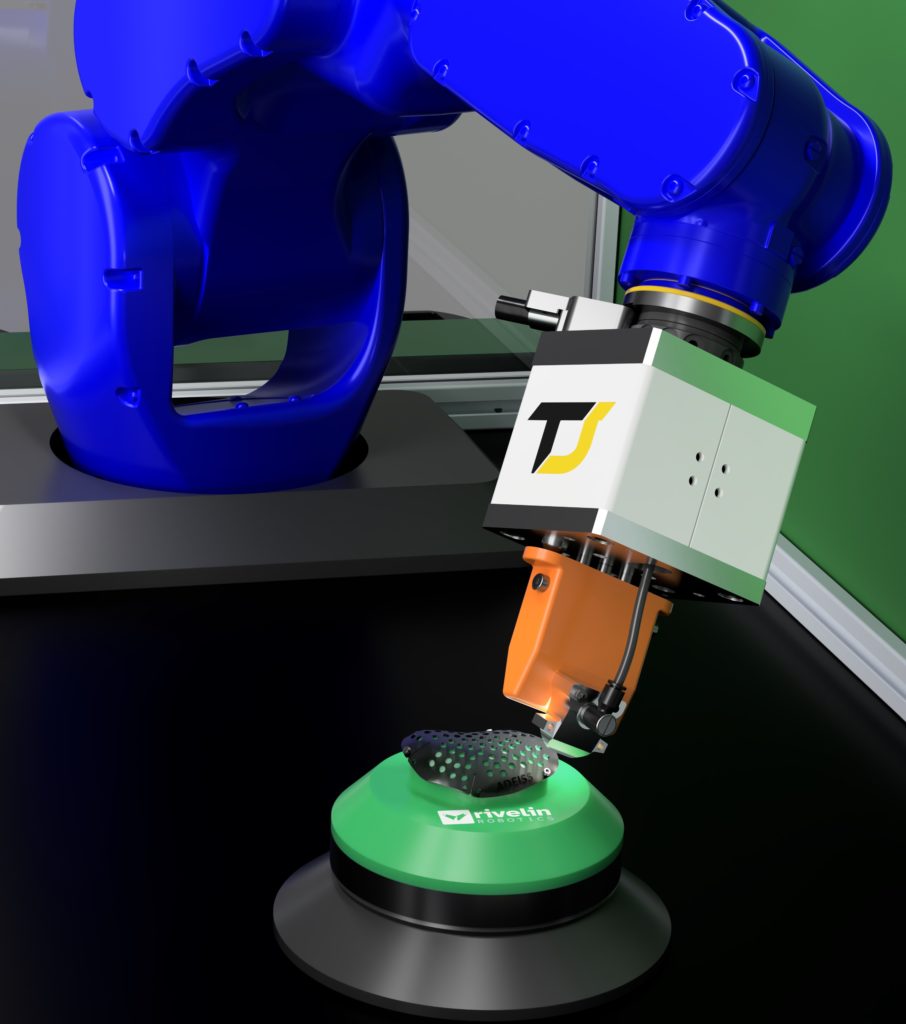Rivelin Robotics, a UK-based original equipment manufacturer (OEM) of robotic systems for metal additive manufacturing (AM), announced that it will introduce its NetShape Robots at this year’s Formnext, in Frankfurt, Germany, November 15-18. Rivelin will be co-hosting Stand B41 in Hall 12 with TextureJet, a UK OEM that will be introducing its electrochemical jet machining (EJM) technology.
The NetShape Robots, designed for metal AM post-processing, are operated by Rivelin’s proprietary NetShape control software. Rivelin claims that by adopting the NetShape system, manufacturers using metal AM can see significant reductions in both defects and costs in the post-processing phase. Given how lengthy and costly a process this typically is, automated post-processing is probably one of the most logical areas for metal 3D printing bureaus to make new investments into.

In a press release announcing Rivelin’s introduction of its NetShape Robots at Formnext, the company’s CEO, Robert Bush, commented, “The search for automated post-processing solutions is on-going and vital for the mass uptake of metal AM across industry, and is the reason that Rivelin Robotics exists. As a company we aim to drive the uptake of AM which we see as a major contributor to a sustainable future, and which will have lasting benefits for our environment. With NetShape Robots we introduce our first breakthrough to achieve this goal.”

As Rivelin’s CEO points out, the improvement of post-processing systems seems to be a prerequisite that would have to be fulfilled, in order for metal AM to start to be realistically incorporated into supply chains for anything remotely approaching mass production. Thus, the fact that use of metal AM seems to be in the earliest stages of a long scale-up means that interest in post-processing platforms should increase at least as much as interest in the printers themselves.
With that in mind, the UK is an advantageous market to be situated within, for a variety of reasons. Not only is metal AM currently burgeoning domestically, but the UK is at the crossroads between growing metal AM markets in both the US and EU (and the the markets for many other things, of course), regarding international trade.
In turn, it seems possible that the UK could emerge as a leader in all the things involved in AM beyond printers and materials. Moreover, the UK lags behind other similar economies in terms of its use of industrial robotics, suggesting that there is ample room in the UK economy for increased automation. This bodes well for growth in the UK’s AM market, as well as in the market in the UK for the combination of AM and robotics.
Images courtesy of Rivelin Robotics
Subscribe to Our Email Newsletter
Stay up-to-date on all the latest news from the 3D printing industry and receive information and offers from third party vendors.
You May Also Like
Further Understanding of 3D Printing Design at ADDITIV Design World
ADDITIV is back once again! This time, the virtual platform for additive manufacturing will be holding the first-ever edition of ADDITIV Design World on May 23rd from 9:00 AM –...
3D Printer Maker EVO-tech Reborn as NEVO3D — Once More With Feeling
EVO-tech was a 3D printing service and original equipment manufacturer established in 2013 and based in Schörfling am Attersee, Austria. The company produced high-quality material extrusion systems featuring linear bearings,...
3D Systems Brings 3D Printed PEEK Cranial Implant to the U.S. with FDA Clearance
For more than 10 years, 3D Systems (NYSE:DDD) has worked hand-in-hand with surgeons to plan over 150,000 patient-specific cases, and develop more than two million instruments and implants from its...
CDFAM Returns to Berlin for Second Annual Symposium
The second CDFAM Computational Design Symposium is scheduled for May 7-8, 2024, in Berlin, and will convene leading experts in computational design across all scales. Building upon the first event...































